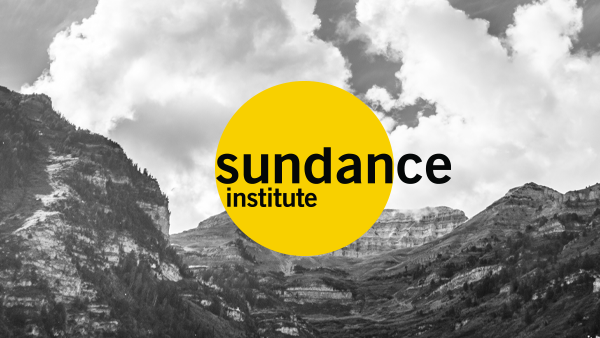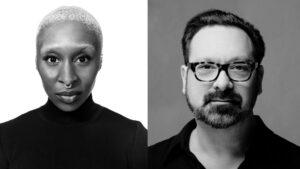Eric Hynes
On the center screen, a man sits behind the wheel of a car. Simultaneously, on a narrower screen to the left, the landscape blurs in retreat. And on another screen to the right is a close-up of the dashboard. Three screens, three fragments of the same environment, with two live musicians hunched over echoing guitars beneath shafts of projection: in HERE (The Story Sleeps), a live music/film exhibition that unfurled at New Frontier on Thursday night, a world came together in unruly parts.
Less a deconstruction of story than a dismantling of it, Braden King’s mesmerizing presentation is the fractured sibling of HERE, a more traditional, better-behaved feature that’s screening in this year’s U.S. Dramatic Competition. There’s a faint trace of HERE’s narrative in The Story Sleeps—a cartographer and photographer fall in together and travel through Armenia—but it quickly devolves into textures and sensations.
Shots repeat and migrate from one screen to another, linger and flicker, then dissolve into abstract shapes and lines. For one sequence, a computer-generated, Google-maps derived series of helicopter shots of advancing landscapes, the visuals actually responded to the improvisations of musicians Michael Krassner (Boxhead Ensemble) and Tim Rutili (Califone), whose diffuse exchange of swirling, droning, feedback-spiked tones bounded about the square blue barn.

Photo Credit: Clayton Chase
After the screening, King, Krassner and Rutili talked to the audience about this second, separate life of HERE. King’s original idea, hatched over a decade ago, was to make a film that felt like his favorite road trips-in a car with the radio on and the landscape panning by. With a co-writer and through the Sundance Institute Screenwriter’s Lab, the narrative for HERE came about slowly, partly because, pace his previous major work-a lyrical, live music/projection piece called Dutch Harbor-he was drawn to more abstract approaches to picture and sound. “This thing in a lot of ways makes a lot more sense to me than the story does,” he said. “This was more of the world I come out of, and the way I like to work with images.”
In 2010, halfway through the editing process for the feature, he developed this live installation piece for presentation at the Museum of Modern Art, drawing from mounds of raw footage, production video, photographs, and computer research. King said it gave him a “chance to step back from structure and from storytelling.
To go, ‘Okay, what were the origins of this, what did I want it to feel like?'” Watching it now, months after it was originally presented at MoMA and with the feature final and Sundance-ready, King was struck by how the two works have taken divergent paths. He couldn’t have foreseen it at the time, but much of the footage in The Story Sleeps doesn’t appear in the feature-instead it lives in this alternate, remarkably fluid universe.
A similar thing happened with the music, as Krassner’s proper score for the feature bears little resemblance to the independent, improvisatory soundscape of The Story Sleeps. “We have the loosest of the loosest road map,” Krassner said, referring to how he and Rutili approach the show. “It changes every night. Tonight it was pretty dark,” he said, laughing. “The film isn’t as dark as we made it seem, but I loved it.”
Confronted by both sides of his artistry, the right brain/left brain split between a three-act structure and something unstructured, King reflected on how the process led him here, and how it carries on.
“I used to get teased a lot for taking things apart and not putting them back together,” he said. “Looking at the movie today, I realized this was me taking a movie apart so that I could put it back together again in a way that made sense to me. Every layer of the film has been part of this grand attempt to figure out who I am, where I am, what this thing is, how movies work. It just doesn’t end.”




